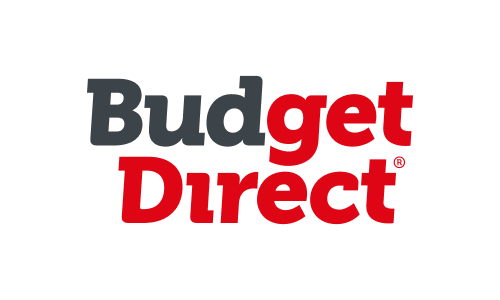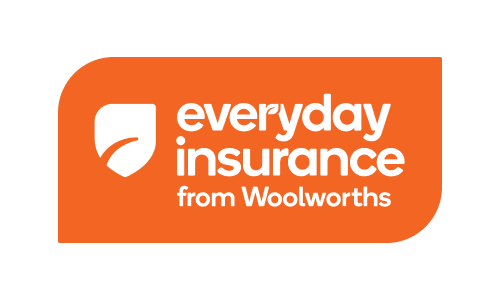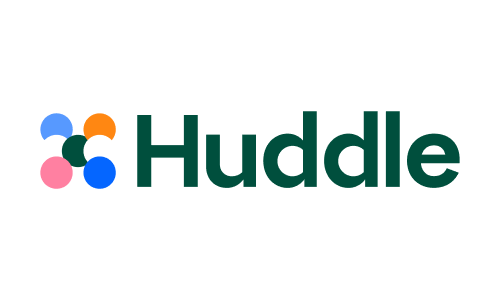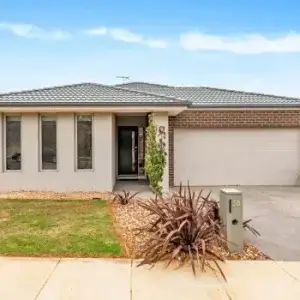Compare Landlord Insurance
Home and contents insurance for rental properties










We do not compare all brands in the market, or all products offered by all brands. At times certain brands or products may not be available or offered to you. Learn more.
Top 3 things to know about landlord insurance
Choose from different types of cover
Whether you’re leasing out an empty space or a furnished home, there’s a policy to suit. Choose from a building, contents or combined policy to protect your investment.
Cover for different situations
With landlord insurance, your property may be covered for things that can go wrong during day-to-day life in Australia (like fires and floods), as well as landlord-specific scenarios like tenant default (also known as rent default).
Know what you’re covered for
It’s important to know what your policy covers you for, especially for a property that you’re renting out, as you may be covered for some things that fall under your responsibility as a landlord (e.g. your liability for maintenance issues that cause problems for your tenants).
It pays to compare landlord insurance
Compare landlord insurance quotes in minutes and start saving today.
Simple to use
Get started by answering a few quick questions to help us understand your land insurance needs.
Compare & save
Save time and money by easily comparing landlord insurance policies from a range of providers side-by-side.
Switching is easy
Follow a few easy steps online to switch to a new landlord insurance policy that suits you and your budget.

Why compare with us?
Our smart comparison technology is trusted, free, safe and secure.
Safe & secure
We take data privacy and security seriously, and will only use your information with your permission. You can read our full privacy policy here.

We believe the best decisions start with a comparison.
We’re proud to have helped millions of Aussies look for a better deal.


A guide to landlord insurance
Updated 20 November 2024

Kochie’s top tips to protect your investment property
Find out more about the types of cover you can purchase for your investment property.



If you’re looking to rent out a property, it’s wise to protect your investment. From storm damage to a fire, or even a burst pipe in the kitchen, you can’t always predict when something might go wrong. That’s where landlord insurance comes in. There are three types of cover that can help give you peace of mind on your property.
Landlord building insurance protects just that, the building. This includes the walls, the roof and even the fencing around the property. If you’re concerned about any furnishings you might have inside the house, such as carpets or window coverings – that’s where landlord contents insurance can help. For comprehensive coverage, you can also purchase a combined policy that will help protect your investment both inside and out.
Compare the Market has these tips to help you mitigate the risks. Number one – keep records. These reports are essential to minimise any tenant disputes about the terms of the lease and help you to claim. Two – inspect to prevent regret.
Doing regular checks could stop little issues from turning into big problems down the track. And three – save on premiums with a higher excess. By choosing a higher excess, you can lower your premiums and save, provided you can pay the excess if you need to claim. Whether you’re a first-time landlord weighing up the right type of policy or a seasoned investor looking to save where they can, it pays to compare!
And Compare the Market allows you to compare policies, benefits and optional extras, all in one place. Don’t leave anything to chance! Start your journey today with Compare the Market.
Tips for landlords from our home insurance expert, Adrian Taylor

Keep all your entry and inspection reports
Keeping a record of the state of your property each time you inspect it can help you should you need to claim for an issue.
Regularly inspect your property
By keeping a close eye on your property, you can stay on top of any issues that arise before they grow into major problems.
Always have a written rental agreement
That way, there can be no dispute about the terms of the tenancy should either party have an issue.
Find out more about landlord insurance
What is landlord insurance?
Landlord insurance is a type of home insurance that typically covers rental properties for loss or damage to any buildings and permanent fixtures caused by an insured event. Some insurance policies for landlords may also offer add-on options for loss of rent, tenant default and malicious damage.
You also have the option to purchase contents insurance to protect any belongings you’ve provided to your tenants (in the case of furnished accommodation), or combined home building and contents cover. As with all policies, you should always check the relevant Product Disclosure Statement (PDS). That way, you can make sure the policy you’re purchasing covers the events you want protection for.
What is a landlord responsible for?
 Being a landlord means you’re responsible for protecting your tenanted property against insurable events (such as fires and storms) that might cause damage to your investment. This is on top of maintenance and repairs, security installations and ensuring the premises are fit to live in and in good condition.
Being a landlord means you’re responsible for protecting your tenanted property against insurable events (such as fires and storms) that might cause damage to your investment. This is on top of maintenance and repairs, security installations and ensuring the premises are fit to live in and in good condition.
Some other types of loss or damage that may be covered under your landlord insurance policy include:
- Loss or damage to fixtures and fittings includes items inside your property such as your carpets, curtains, air conditioner/heater, stove and dishwasher.
- Theft or malicious acts by tenants or their visitors.
- Legal liability when an accident at your property causes loss, damage, injury or even death to another person or their property.
If you’re renting out a fully or partially furnished property, your contents insurance policy may cover loss or damage to:
- Your furniture
- Curtains
- Household goods (e.g. utensils, electrical appliances, whitegoods)
- Blinds
- Floor coverings (e.g. carpets, rugs)
- Detachable light fittings.
Luckily, building cover and contents insurance for landlords can help with the costs associated with these losses, depending on your level of cover. Be sure to read the PDS and Target Market Determination (TMD) for the full details of a policy before you purchase it.
Your coverage with landlord insurance
What insurance do landlords need?
A landlord looking to safeguard a free-standing house or building (that isn’t covered by a strata policy) could take out home insurance, also known as building insurance, to protect the walls, roof and property fencing. This policy could be combined with contents insurance to cover furniture or other contents provided to the tenant with the home. You may also find that some insurers offer automatic contents cover within a landlord’s insurance policy.
Having landlord insurance cover can also provide peace of mind for things like loss of rent, tenant default and malicious damage.
What does landlord insurance cover?
Landlord insurance covers your investment property for a range of incidents and insured events, including some that are unique to rental properties.
Some events (like flood damage and electric motor burnout) may be offered as optional cover, which you can add to the cost of your policy. You may also be able to purchase optional cover in the event that a tenant defaults on their rent or maliciously causes damage to your property.
The table below outlines the common inclusions and exclusions of landlord building insurance, landlord contents insurance and landlord combined insurance.
| What is & isn’t covered? | Landlord building | Landlord contents | Landlord combined |
|---|---|---|---|
| Storm damage | ✓ | ✓ | ✓ |
| Fire damage | ✓ | ✓ | ✓ |
| Flood damage | ✓/Optional extra | ✓/Optional extra | ✓/Optional extra |
| Earthquake | ✓ | ✓ | ✓ |
| Movement of the sea | ✗ | ✗ | ✗ |
| Vandalism | ✓ | ✓ | ✓ |
| Theft | ✓ | ✓ | ✓ |
| Impact damage | ✓ | ✓ | ✓ |
| Portable contents | ✗ | Optional extra | Optional extra |
| Motor burnout | Optional extra | Optional extra | Optional extra |
| Damage from vermin | ✗ | ✗ | ✗ |
| Accidental damage | Optional extra | Optional extra | Optional extra |
| Escape of liquid (excluding the leaking item) | ✓ | ✓ | ✓ |
| Removing debris | ✓ | ✓ | ✓ |
| Damage to renovations | ✗ | ✗ | ✗ |
| Temporary accommodation | ✓ | ✓ | ✓ |
| Tenant default | Optional extra | Optional extra | Optional extra |
| Loss of rent | Optional extra | Optional extra | Optional extra |
| Malicious damage | Optional extra | Optional extra | Optional extra |
There may be terms, conditions, limits and exclusions attached to your coverage, so make sure you read and understand the policy documents before taking out insurance.
What is the best landlord insurance?
 The best landlord insurance policy for you will depend on your circumstances and the type of investment home you have. Each type of cover has something to offer and you might consider each one in the following circumstances:
The best landlord insurance policy for you will depend on your circumstances and the type of investment home you have. Each type of cover has something to offer and you might consider each one in the following circumstances:
- Landlord building insurance could suit you if you’re just looking to cover the home building and other outbuildings at your insured address. It won’t cover any items you’ve left in the investment home like appliances, curtains, carpets or furniture.
- Landlord contents insurance is worth considering if you’re leasing out a strata title home like an apartment or a townhouse. Generally, these types of buildings are protected by your body corporate’s strata insurance, so you might only need cover for the items you own inside your investment home.
- Landlord combined cover could suit you if you’re an investment homeowner who wants both building insurance and contents insurance in one policy.
Does landlord insurance cover tenants’ contents?
No – the contents portion of cover under a landlord’s insurance policy is for your own belongings that are inside your insured address, such as:
- Furnishings
- Carpets
- Blinds
- Other items you own inside the home.
It will not cover any tenant’s belongings, so your tenants would need to look into purchasing renters insurance to cover their contents inside the rented property.
Can I get landlord insurance for a holiday rental?
If you lease your property as short-stay accommodation (e.g. Airbnb), you may want to ensure that you have the right type of cover. Many policies that cover landlords will not provide cover for short-stay accommodation. You may need to seek out a specialist policy or provider to cover your holiday rental property.
How landlord insurance works
How much does landlord insurance cost?
The cost of landlord insurance is different for every person. Some factors that can affect the cost of your landlord insurance policy include:
- The location of your property. Many Australian homes are vulnerable to a range of natural disasters such as floods, bushfires, cyclones, storm surges, subsidence and erosion (including sinkholes). If your property is in a hazard-prone area, this will reflect on the cost of your landlord insurance policy.
- Your suburb’s crime rate. The higher the crime rate in your property’s area, the more your insurance policy will likely cost.
- Sum insured. How much your building and contents are insured for should you need to rebuild or replace them generally influences your premium.
Is landlord insurance tax deductible?
 As a general rule, your landlord insurance premiums are tax-deductible, as well as other expenses associated with renting out your property like:1
As a general rule, your landlord insurance premiums are tax-deductible, as well as other expenses associated with renting out your property like:1
- Advertising for new tenants
- Property management fees
- Council rates
- Water bills
- Land tax
- Cleaning, gardening and lawn mowing bills
- Pest control expenses
- Property repairs and maintenance
- Real estate agent fees and commissions
- Interest charged on your home loan
- Legal expenses for:
- Evicting a defaulting tenant
- Taking court action for loss of rental income
- Defending a damages claim brought on by a third party for injuries suffered at your rental property.
Before making any decisions about your tax return, consider speaking with an accountant or other professional.
Is landlord insurance compulsory?
No, it’s not compulsory in Australia to have landlord insurance or home and contents insurance for your tenanted property. However, it can be wise to have these policies in place to protect your valuable investment from loss or damage caused by an insured event.
How do I ensure I'm covered for the right amount?
 As an Australian landlord, fires and floods are among the big risks to your investment property. Catastrophic events like these can leave you with a massive repair bill, and you could find yourself unable to afford your property’s repair and rebuilding costs.
As an Australian landlord, fires and floods are among the big risks to your investment property. Catastrophic events like these can leave you with a massive repair bill, and you could find yourself unable to afford your property’s repair and rebuilding costs.
This is why you need to accurately calculate the full replacement value of your property and take inventory of all your belongings there. Here are a few things you can do to achieve this:
- Document everything you own – your rental property, permanent fixtures, furnishings and any contents residing within the property – for insurance purposes. Videos are good for this.
- Keep the receipts and take photos of all your items leased with the property to make sure there’s a record of your ownership.
- Work out the accurate value of your property and contents. You might find some online calculators that can help you do this.
Why should I take out landlord insurance for my property?
Even an airtight rental agreement and regular maintenance won’t stop things from going wrong, like carpet stains or major incidents such as a fire or flood. A landlord insurance policy could help with things like:
- Repair and replacement costs for your investment property if it’s damaged or destroyed by an insured event
- Cover for landlord-specific scenarios such as rent default or malicious damage by tenants
- Legal liability cover.
Meet our home insurance expert, Adrian Taylor
As the Executive General Manager of General Insurance at Compare the Market, Adrian Taylor believes protecting your investment property should be an easy and efficient process. It’s important for landlords to adequately cover their property and belongings against risks that could result in financial loss, so Adrian strives to empower landlords with knowledge and choice when it comes to insurance.
Adrian has over 13 years’ experience in the financial services industry. He helps review general insurance content on Compare the Market to ensure it accurately breaks down complex insurance topics.

Want to know more about landlord insurance?
1 Australian Government: Australian Taxation Office – Rental expenses you can claim now. Last updated June 2023. Accessed October 2024.